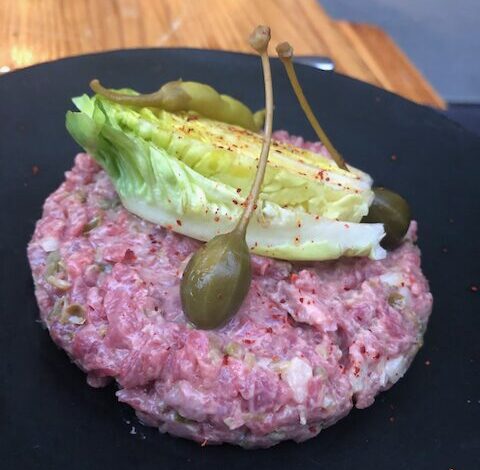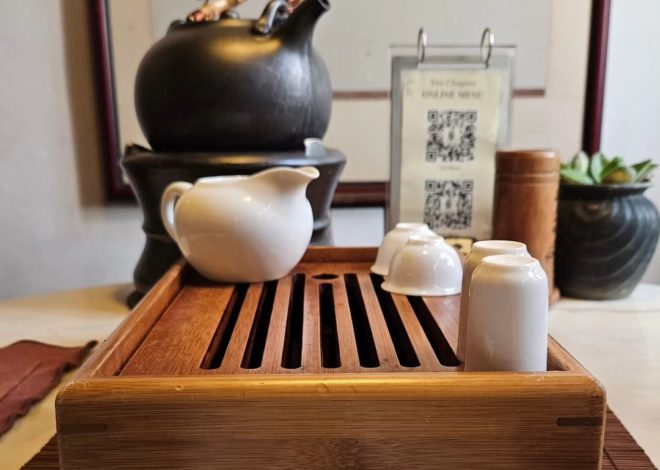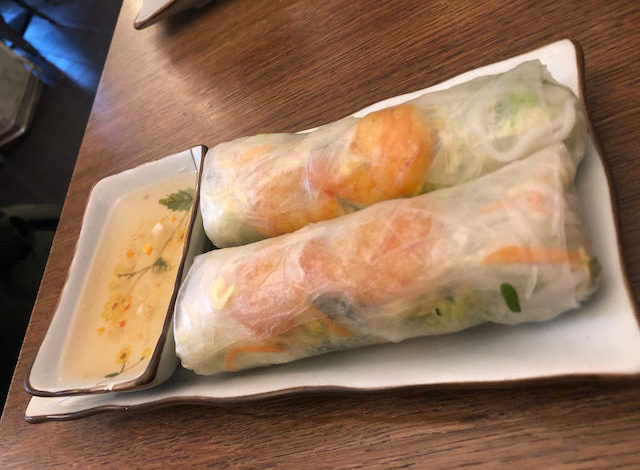
An Amazonian Private Chef’s Chronicle:

My last trip to Venezuela, my home country, was in 2013. At that time, I had the chance to visit Autana-tepuy in the Amazonas state. We embarked on a boat journey where the guide and his two assistants took charge of cooking for the entire group. It was the first time I contemplated what seemed like a glamorous opportunity to be a chef for travelers in the Amazonas.

Three years later, I found myself in Bolivia, running a culinary lab associated with various projects and discussing plans with Amazon adventure tour guides to do just that. Most people associate Bolivia with Andean mountains but it’s actually 70% Amazonian Rainforest and it’s territory is larger than Spain.
“Two high profile ladies. They’re big-time travelers. They’re into adventure, even helicopter flying, and they’ve rafted all around the globe. Now, they’re heading to Bolivia. We want you to whip up a menu and come along. It’s an 8-day gig, rafting down the wild Tuichi River rapids.”
At that point, I only cared about allergies, dietary restrictions, and the number of diners.
“It’s just gonna be the two girls, and they’re bringing two friends who are part of their crew. Their diet needs to be halal.”
I got to work, designing a menu with oriental influences and local ingredients. I focused on the tried-and-true dishes from Scannone’s Red Book, included natural beverages, and incorporated endemic products. After careful planning, we had a second meeting, and they loved everything. They gave it the green light right away.
“You’ll travel overland to Apolo, a village deep in the Amazon, within the Madidi National Park. There’s an old Inca trail an hour from the Tuichi River mouth, where we’ll navigate to Madidi and then to Rurrenabeque. There will be members of our team ready to tackle the rapids. In Apolo, you can shop; they have endemic Amazonian products and good meat. I’d leave some room to incorporate these elements into the menu. When you reach Apolo, an old Czechoslovakian man will provide you with beer crate-sized ice blocks.”
I couldn’t help but think of Melquiades from Macondo. They were taking me to Apolo to see ice.
I remembered and was considering this briefing while I was at the market getting my supplies…
“I’d leave some room to incorporate these elements into the menu.”
But suddenly, a spider sense activated in me, something only those who grew up in the Venezuelan Caribbean would understand. Those who have handled unconventional culinary events. First, don’t trust anyone. Second, save your ass first. Third ensure a buffer, depending on the nature of the event. I called my employer and asked for a budget increase .
“We trust you, Erich. These are very important clients. The money they’re paying us will be used for a youth restaurant school project. So please, don’t fuck this up. It’s crucial.”
My common sense told me to triple the supply of ingredients, to refuse to run out of food on an expedition with VIP clients in the Amazon. I did exactly that, vacuum-sealed everything, and placed it in the freezer. The strategy was straightforward, freezing everything to a solid -40°C and sealing the chamber. The ice-cold chill would easily take a week to thaw out. Everything seemed perfect… until I received the call that would change the entire trip.
“There’s been a change. We need to pick up the supplies tonight.”
“No, it can’t be. I’m the chef. You can’t take anything. It needs to stay frozen.”
“I’m sorry; it’s not an option. We have to take the food today. Don’t worry. There will be ice in Apolo. Pack your things you’re coming with us. Everything will be fine.”

This meant that I was simultaneously losing a day and ice for keeping my supplies refrigerated. In the culinary lab, we had a blast chiller. I went to one of our associated restaurants, froze bags of ice, and managed to pack everything on time. Chef Aaron Castillo gave me some of the staff’s food for the next day and chef Kenzo Hirose equipped me with all sorts of utensils that might come in handy. I had to leave at 11 p.m., heading to El Alto, a city located 4,150 meters (13,615 feet) above sea level, on the high plateau, one of the world’s most ancient regions.

They picked me up from the Zona Sur, where we made a stop in the city center to pick up the rafting instructor, a Frenchman incredibly enthusiastic about his clients. We continued to El Alto, where we picked up a local guide who had grown up in Madidi. We faced a long 12-hour journey to reach Apolo, followed by another 2 hours to the Tuichi River mouth. In my mind, I only saw a countdown of the shelf life of my foods, slowly ticking away.
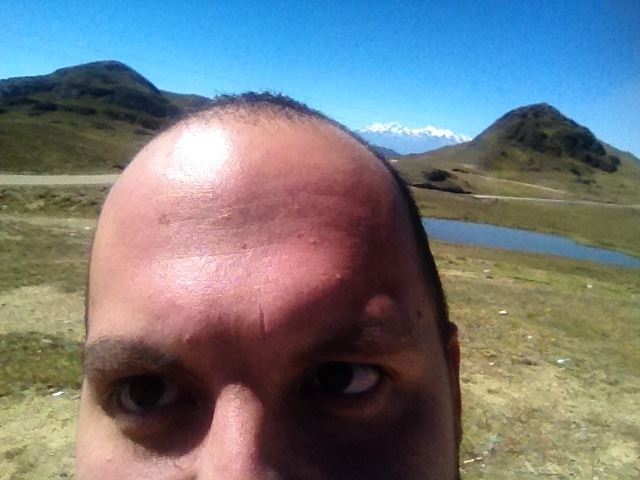

Cesar, the local guide, recounted the story of Yossi Ghinsberg, who had drawn inspiration from “Papillon” and the quest for El Dorado. Ghinsberg had ventured along the same route we were now taking but had endured a treacherous three-week ordeal in the jungle. He was part of a four-person expedition, and emerged as the sole survivor. Cesar had been involved in the rescue mission that eventually located him deep within the jungle. Ghinsberg survived because he had no qualms about eating monkeys, while his friends did, leading to accusations of cannibalism against him.
“When we found him, he was filled with worms, he must have been lying there in the midst of the jungle, waiting for death for days. We had to smoke him to remove the worms from his body.”

After returning to Israel, he wrote a book detailing his expedition, later adapted into a film featuring Daniel Radcliffe (Harry Potter). This was ‘The Book of Yossi’ that everyone spoke of as if it were a gospel, sparking a significant influx of Israeli tourists to the region. Most notably, it attracted youngsters fresh out of their mandatory four-year military service, seeking psychedelic experiences, meaning, ayahuasca exploration.

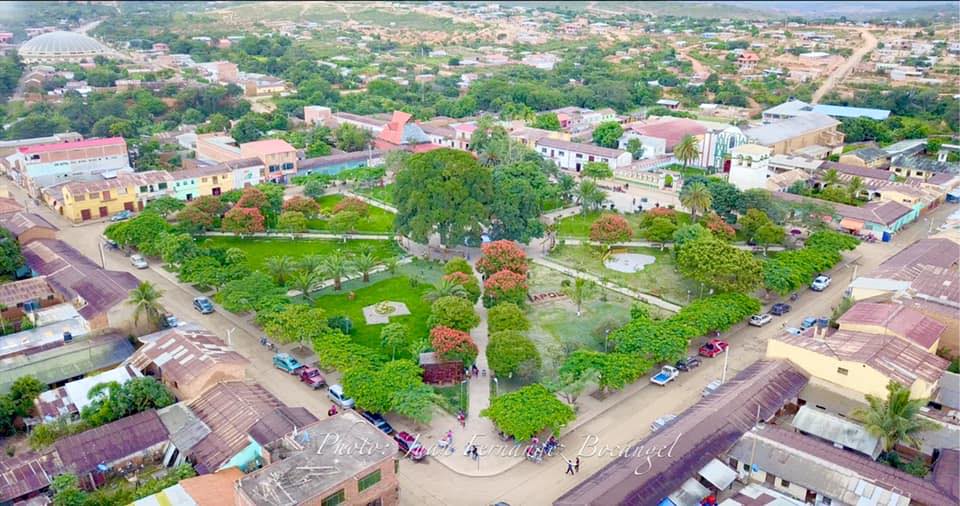
We arrived in Apolo at night. We would spend the night there, and in the morning, I bought some food from an old lady in the town square who weighed items using an archaic weighing system consisting of a hanging hook with metal counterweights. The fruit I purchased was aguaje, a strange treasure, kinda like fresh dates, snugly wrapped in their scaly, protective armor.


I made my purchases and went to the supposed butcher they had promised me. I found two decapitated cow heads on a wooden table, tongues sticking out, with flies buzzing around. That was the butcher shop. Thank goodness I had brought everything I needed times three.

I needed ice. They explained that there was a gasoline shortage because, as we all know, it’s one of the base ingredients for producing cocaine, so it was regulated by the military, who, as we all know, control the business.
The guides I was with managed to get gasoline after bribing some soldiers, but there was no ice. From there, we had to drive another hour to the Tuichi River mouth.
“Don’t worry, they’ll bring ice with the next fleet of vehicles coming in with the girls.”

Upon arrival, I realized the magnitude of the profile of those ‘two girls’ I would be cooking for. I met an entourage of about 20 indigenous guides, building wooden cabins. It didn’t take long for me to realize the focus of the conversations of those talkative and playful guides.

“What will the princesses be like? Will they wear crowns? Will they be fat? ‘Laughter’ They say they’re coming with a bodyguard and a private photographer. They’re from a Arab country. Daughters of a great sheikh.”
“Princesses?!” This was the first time I caught wind that my clients were ‘princesses.’ I recalled the briefing, “they’re bringing two friends who are part of their crew.” Oh, okay… a private photographer and a bodyguard. Perfect, I thought, messing up the meal might just earn me a bodyguard execution.
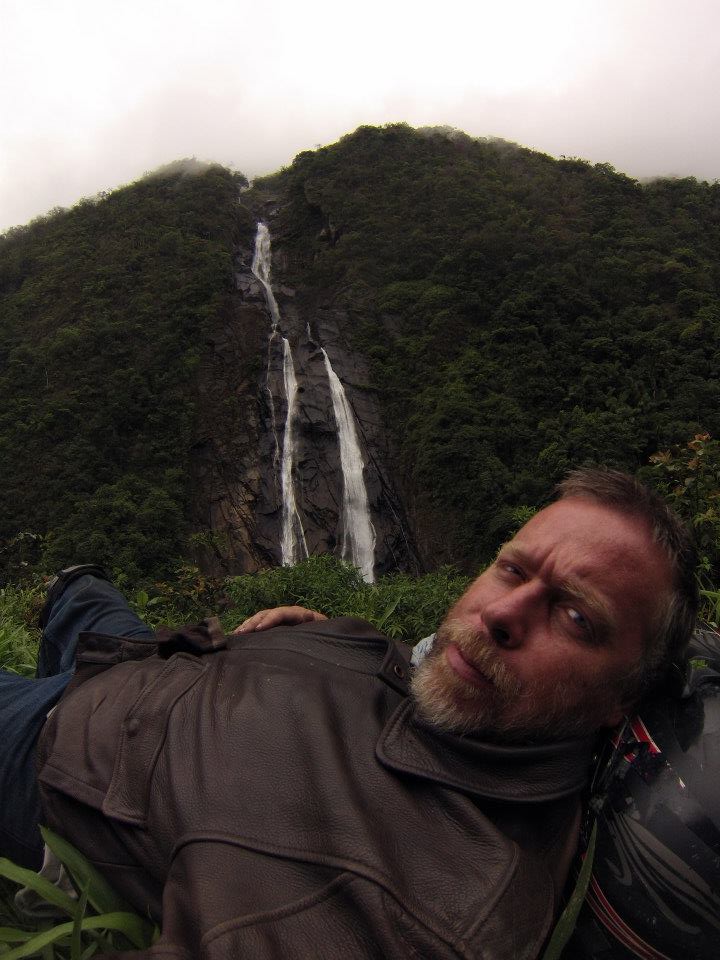
Alberto, a Bolivian-German and one of the funniest people I’ve ever met, had been helping build cabins and rafts shirtless all afternoon, which resulted in him turning as red as a giant tomato. He introduced me to Mamani, an assistant cook who would be with me throughout the expedition.
“This guy is aymara, a mountain Indian, not from the jungle, so he can’t swim. Be careful he doesn’t fall in the water.”
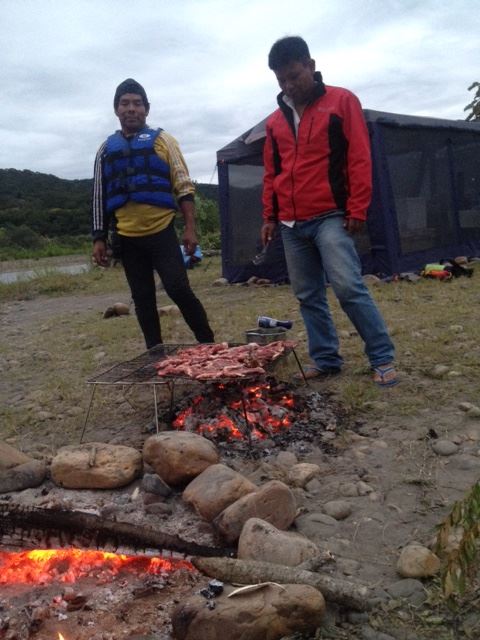
All the guides burst into laughter, especially one with a long scar across his face. They seemed like river pirates, engulfed in laughter loaded with sarcasm and cruelty, all while sharpening their machetes for further cutting long wooden stakes. In contrast, Mamani remained stoic, able to laugh at himself.
Mamani was incredible. He worked cleanly, quickly, and helped me with everything. He told me he had a gold mine that supported his family; this was just a side hustle. I’ve seen Bolivian mines, there’s often a figurine called ‘El Tío’ representing the devil to whom offerings like aguardiente, cigarettes, and money are made, asking for his permission to enter the mines in the underworld.
For the inaugural dinner, I had a simple plan in mind: chicken skewers, marinated Moroccan-style with a zesty blend of lemon, thyme, coriander seeds, and ají amarillo instead of paprika. It was a race against time because chicken doesn’t have the longest shelf life. To complement the skewers, I whipped up a tabbouleh-inspired salad, incorporating Andean pseudo-grains like amaranth, quinoa and Kañiwa, and some slices of aguaje, those Amazonian fruits I’d sourced in Apolo. That was the kickoff.
Mamani prepared pre-elaborations for tomorrow’s breakfast: arepas – Venezuelan corn cakes with the black beans Aaron gave me from the staff meal. And to top it off, ‘perico’, a Venezuelan scrambled egg jazzed up with a tomato sofrito base. I had most pre-elaborations ready in vacuum sealed bags.
The rafting instructor began deploying his gear and gave us a demonstration of rescue techniques in case a raft overturned. The rescue procedure involved learning the correct way to throw a rope to save someone if they fell into the rapids. The rescue rope was stored in a small bag, coiled in a way that when thrown, much like a rugby ball, it would unroll and extend up to about 20 meters (65 ft) in length.

Not far from our campsite stood an ancient wooden sugar cane mill known as a “trapiche” next to a vehicle. Throughout my life, I’ve come across these ancestral machines in museums, in the Venezuelan countryside, or as decorative pieces in grand houses or traditional restaurants. However, I’ve never witnessed them in operation, as modern electric machines have replaced them. In Venezuela, we craft a delicious beverage called ‘Papelón con limón’ from freshly squeezed sugar cane combined with lime. It’s a real treat.
Fernando engaged in a conversation with the guides about this place.
“Who lives here?”
“That’s Mr. Huidobro.”
“Oh right, I know him. He’s the only one who knows how to castrate around here.”
“That’s right. People bring their livestock from all over because he’s the expert. He can do the procedure in no time with a blade, while the animal is awake.”
People from the jungle have never ceased to amaze me. They always seem like they’ve stepped right out of a García Márquez novel.
Then there were the raft operators, constructing their rafts. It basically consisted of 8 to 10 giant tire tubes inflated as black lifebuoys, onto which a grid of cut sticks was placed and tied to the tubes. Archaic but very clever, as it was a flexible and resilient vessel, very difficult to overturn compared to the common inflatable rafts, used in the north. To navigate, one pilot stood at the front, another positioned themself at the rear, each armed with long poles for maneuvering. With these tools, they could expertly steer through the tumultuous river, even handling sharp turns with precision in the midst of the mighty rapids.
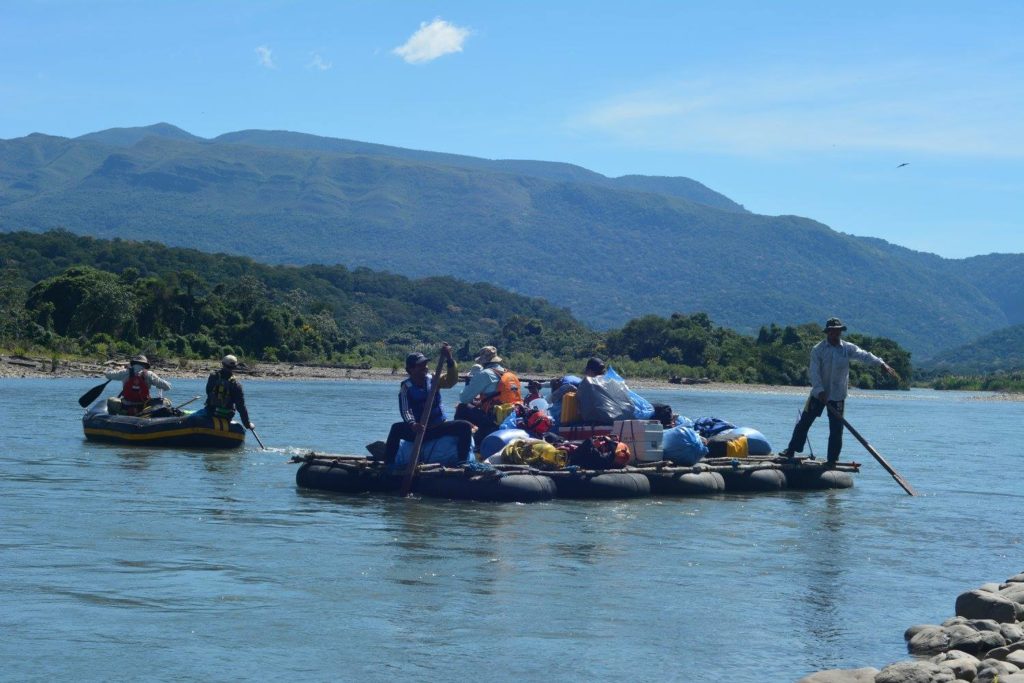
All our belongings were securely stowed in tightly sealed plastic barrels, and all the essentials for the journey were tied atop the raft. With this setup, we were to embark on a rollercoaster ride of water and rocks, hours away from the nearest hospital by helicopter, assuming they would dispatch one in case of an emergency.
My only concern at this point was ice. I needed to get ice; otherwise, my food would spoil entirely. I mentally reviewed the stock and adjusted my menu based on expiration dates. Still, I had the feeling that if the ice didn’t arrive, I wouldn’t have enough food for the 4-day journey downstream.
The fruits I had bought were rotting. The food I had managed to preserve for two days thanks to the last-minute ice bags. I didn’t even want to open the cooler to keep it cold, so I took out everything I needed in a split second.
The guides prepared torches for a welcome committee. Everything was so over-the-top. Who were these princesses? We waited, past dinner time, midnight, into the early morning. Finally, the rustic vehicles arrived, blinding us with its high beams.
The princesses, two women in their thirties dressed entirely in Western attire, with pants and uncovered hair, had already dined. One of them wasn’t feeling well and went directly to the waiting tents. They weren’t hungry.
I made my way to the owner of the travel agency who would also be on the journey.
“What about the ice?” I asked, frantically grabbing his shirt.
He opened the cooler in the back of the vehicle they arrived in. My world collapsed. My blood pressure dropped. There was a pool of water with three tiny ice cubes swimming in it. My mind fast-forwarded four days ahead, seeing us run out of food and starving, eating monkeys or resorting to cannibalism to survive, just like Yossi Ghinsberg. There was no way to make this trip without ice.
“What do we do?” he asked.
“Cancel the trip,” I said.
To be continued…

